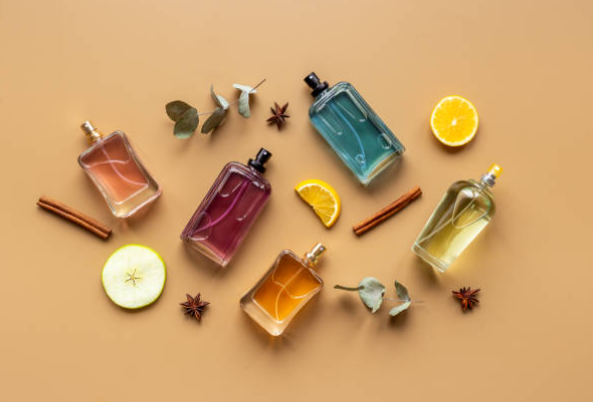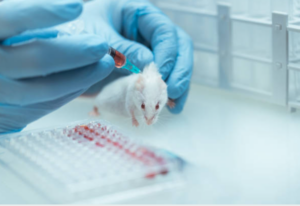

Draize test


The allure of a signature scent is undeniable; the right fragrance can transport us to distant memories, evoke emotions, and enhance our confidence. However, the dark reality behind many perfumes involves a hidden cost that often goes unnoticed – animal testing. In this in-depth exploration, we delve into the often-overlooked world of animal testing in the perfume industry, shedding light on the ethical concerns and advocating for a more compassionate approach to personal care.
The use of animals in fragrance testing dates back to a time when the safety of cosmetic and personal care products was paramount. Rabbits, guinea pigs, mice, and rats became unwitting participants in experiments that sought to assess the potential harm of various fragrance ingredients. These animals were subjected to a range of tests, including skin and eye irritation tests, where substances were applied directly to their skin or eyes, often resulting in painful reactions.
One of the most notorious tests, the Draize test, involves dripping substances into the eyes of restrained rabbits to evaluate the irritation caused. This procedure, along with other methods, has been widely criticized for its inhumane nature and the unnecessary suffering it imposes on animals. Unfortunately, these practices persisted for decades, as the demand for new and enticing fragrances in the market drove the need for extensive testing.
Despite growing awareness and concerns about animal welfare, the regulatory landscape surrounding animal testing in the fragrance industry remains a complex and controversial terrain. While strides have been made in recent years to ban or restrict animal testing for cosmetics in several regions, the fragrance sector has not witnessed the same level of scrutiny. The lack of a standardized approach across international jurisdictions allows for inconsistencies in regulations, creating loopholes that some companies exploit to continue testing on animals.
In certain cases, companies argue that they are complying with regulations by conducting animal testing in countries where it is still permitted, even if their home country has banned such practices. This highlights the need for a global commitment to end animal testing in the fragrance industry and a unified effort to establish cruelty-free standards.
Despite the existence of alternative testing methods, the slow pace of regulatory change has resulted in continued suffering for countless animals involved in fragrance testing.
The toll on animals subjected to fragrance testing is both physical and psychological. Beyond the pain inflicted during the experiments, animals often endure a life of confinement and deprivation. Laboratory conditions, marked by small cages and limited social interaction, contribute to stress and anxiety among the test subjects.
Moreover, many of these animals are euthanized after testing, as their utility is deemed obsolete. The loss of life, coupled with the inherent cruelty of these practices, raises profound ethical questions about the necessity of such testing methods.
The ethical implications become even more pronounced when considering that the results obtained from animal tests may not accurately predict human responses due to inherent biological differences between species. This raises concerns not only about the ethical treatment of animals but also about the scientific validity and reliability of these testing methods.
Another layer of complexity is added by the lack of transparency within the fragrance industry. Companies are not always forthcoming about their testing practices, and the term “fragrance” on ingredient lists often conceals a complex mixture of chemicals, some of which may have been tested on animals. This lack of transparency makes it challenging for consumers to make informed choices and underscores the need for greater accountability within the industry.
Unmasking the Components
While the allure of a signature scent may captivate our senses, it’s crucial to recognize the complexity of fragrance formulations. Perfumes often contain a multitude of ingredients, and the journey of these components from lab to bottle may involve ethical concerns, particularly when it comes to animal testing.
The Chemistry of Fragrance
Fragrance formulations consist of a blend of natural and synthetic ingredients, carefully orchestrated to create a specific olfactory experience. Natural ingredients may include essential oils extracted from flowers, fruits, or spices, while synthetic molecules are engineered to mimic or enhance certain scents. Both categories, at various stages of their development, might have undergone animal testing.
Historical Precedence
In the early stages of perfume development, natural ingredients were predominantly used. Essential oils derived from plants required minimal alteration and were less likely to be subjected to extensive laboratory testing. However, as the fragrance industry expanded, the demand for new and innovative scents led to the introduction of synthetic molecules, many of which were tested on animals to ensure safety and efficacy.
The Ethical Dilemma
Understanding the origin of fragrance ingredients is integral to navigating the ethical landscape of the perfume industry. Some companies may proudly declare that their products are cruelty-free, but the complexities arise when dealing with suppliers and third-party manufacturers. It’s not uncommon for an individual ingredient to have been tested on animals during its development, even if the final perfume product itself was not.
Alternatives and Innovations
Advancements in technology and a growing awareness of ethical concerns have prompted the exploration of alternative testing methods. In vitro testing, which involves using human cell cultures, and computer simulations are two examples of alternatives that don’t involve animal subjects. However, the adoption of these alternatives has been uneven across the industry, with some companies hesitating due to concerns about the reliability of results or a reluctance to deviate from established testing practices.
The Need for Transparency
Consumers seeking cruelty-free fragrances face the challenge of navigating the lack of transparency in the industry. Ingredient lists on perfume bottles often use the generic term “fragrance” or “parfum,” providing little insight into the specific components. This opacity makes it difficult for consumers to make informed choices aligned with their values.
Certifications and Assurance
To address these challenges, various cruelty-free certifications and labels have emerged, providing a level of assurance to conscientious consumers. Recognizable symbols like the Leaping Bunny or PETA’s cruelty-free logo indicate that a brand or product adheres to specific cruelty-free standards. However, the efficacy of these certifications relies on the commitment of companies to maintain cruelty-free practices throughout their supply chains.
Consumer Empowerment:
In response to the ethical dilemma of hidden ingredients, consumers are becoming more empowered through information. Online platforms, social media, and forums provide spaces for individuals to share knowledge about cruelty-free brands and demand greater transparency from the fragrance industry. By actively seeking out and supporting companies that uphold cruelty-free principles, consumers contribute to the momentum for change.
With the rise of ethical consumerism, there is a growing demand for transparency in product formulations and manufacturing processes. Consumers are becoming more conscious of the impact of their purchasing decisions on the well-being of animals. As awareness spreads, the call for cruelty-free practices in the fragrance industry is gaining momentum.
Some fragrance brands have taken a stand against animal testing, proudly labeling their products as cruelty-free. These companies actively seek alternative testing methods and advocate for stricter regulations within the industry. By supporting these brands, consumers can align their values with their purchasing choices and contribute to the shift toward cruelty-free practices.
To empower consumers in making informed choices, various cruelty-free certifications and labels have emerged. Recognizable logos, such as the Leaping Bunny and PETA’s cruelty-free symbol, indicate that a product and its ingredients have not been tested on animals. Understanding these certifications can be a powerful tool for consumers committed to supporting cruelty-free brands.
Several fragrance brands have embraced the cruelty-free movement, championing the cause by refusing to engage in animal testing. By spotlighting these trailblazing companies, consumers can make choices that align with their values and contribute to a positive change in the industry.
Animal rights organizations play a pivotal role in advocating for legislative changes and raising awareness about the ethical implications of animal testing. By supporting these organizations, individuals can contribute to the larger movement aimed at creating stricter regulations and ultimately eliminating animal testing in the fragrance industry.
As consumers, our purchasing decisions hold significant power. By choosing cruelty-free perfumes and supporting brands committed to ethical practices, we actively contribute to the shift toward a more compassionate industry. Social media platforms and online forums provide spaces for consumers to share information, experiences, and recommendations, fostering a sense of community and empowerment.
The beauty of fragrance should not come at the expense of animal welfare. As consumers, we have the ability to shape the industry through our choices and voices. By supporting cruelty-free brands, advocating for legislative changes, and staying informed about the ethical practices of the fragrance industry, we can collectively contribute to a future where the hidden price of fragrance no longer involves the suffering of innocent animals. Let our pursuit of beauty be a reflection of compassion, and may our fragrances tell a story of ethical elegance.
Sustainable Shades For many DIY enthusiasts and design aficionados, a fresh coat of paint is…
Cruelty-Free Solutions for a Healthier You Chronic inflammation can be a relentless foe, disrupting our…
Unleashing Your Brain's Potential In today's fast-paced world, maintaining sharp mental focus and cognitive agility…
Exploring DIY Organic Makeup Fixers For the eco-conscious beauty enthusiast, the quest for flawless makeup…
A Sensitive Exploration The clean beauty movement has taken the beauty world by storm. Consumers…
Taming the Mane Frizz – the bane of smooth hair dreams. It can transform a…
This website uses cookies.